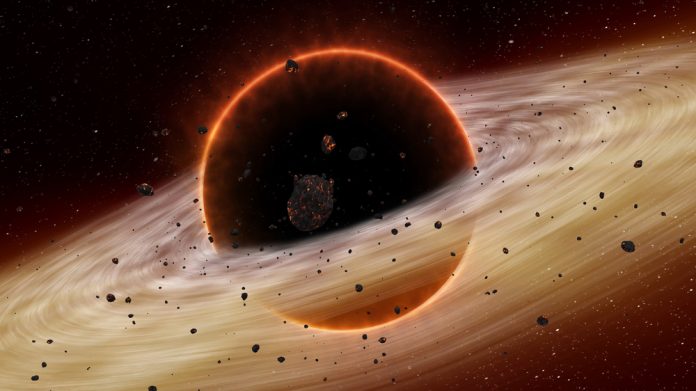The formation of supermassive black holes has puzzled scientists for decades. Typically, these cosmic giants are thought to emerge from the remnants of massive stars—those with at least 50 times the mass of our Sun.
However, even after a billion years of stellar evolution and collapse, such black holes are usually only around ten solar masses.
This is a far cry from the supermassive black holes, like the four million-solar-mass behemoth, Sagittarius A*, found at the centre of our Milky Way, or the billion-solar-mass black holes observed in other galaxies.
Traditionally, these enormous entities were believed to form through a prolonged process of accretion, where smaller black holes gradually merge and accumulate mass over billions of years.
The James Webb Telescope’s surprising discoveries
However, recent observations by the James Webb Space Telescope (JWST) have turned this narrative on its head.
The JWST has identified supermassive black holes near the dawn of time—just hundreds of millions of years after the Big Bang. This discovery raises a perplexing question: How could these supermassive black holes have formed so quickly?
Astrophysicists from UCLA believe they may have found an answer in the enigmatic substance known as dark matter. Their groundbreaking findings suggest that dark matter played a crucial role in the early formation of these cosmic giants.
Dark matter: The mysterious architect of the cosmos
Dark matter, a substance that makes up most of the Universe’s mass yet remains invisible and undetected, could be the key to understanding how supermassive black holes formed so rapidly in the early universe.
While dark matter does not interact with light or ordinary matter in the way we are familiar with, it exerts gravitational forces that influence the behaviour of galaxies and other cosmic structures.
The researchers propose that dark matter may have prevented hydrogen gas from cooling down too quickly in the early universe.
Normally, when a large cloud of gas cools, it tends to fragment into smaller regions, each forming its own dense object rather than a single massive black hole.
This process is driven by molecular hydrogen, which acts as a cooling agent. As hydrogen molecules collide with free hydrogen atoms, they lose energy and radiate it away, causing the gas cloud to cool and fragment.
Radiation’s role in black hole formation
To solve the mystery of early supermassive black holes, researchers Yifan Lu and Zachary Picker developed a model that introduced additional radiation into the equation.
Their calculations showed that this radiation could heat the gas and disrupt the cooling process by breaking apart molecular hydrogen.
Without the rapid cooling and fragmentation, the gas cloud would remain large and dense enough to collapse directly into a supermassive black hole.
But where does this crucial radiation originate? According to the UCLA team’s hypothesis, dark matter might hold the answer. Some forms of dark matter could contain unstable particles that decay over time, releasing photons—particles of light.
These photons could provide the necessary radiation to keep the gas cloud intact, allowing it to collapse into a massive black hole.
The idea that dark matter might emit radiation, albeit indirectly, opens new avenues for understanding both supermassive black holes and dark matter itself.
If dark matter consists of particles that decay and emit radiation, it could explain why these colossal black holes existed so early in the Universe’s history.
Moreover, this theory could provide a tantalising hint about the nature of dark matter, a mystery that has eluded scientists for decades.
“This could be the solution to why supermassive black holes are found very early on,” said Picker.
“If you’re optimistic, you could also read this as positive evidence for one kind of dark matter.
“If these supermassive black holes formed by the collapse of a gas cloud, maybe the additional radiation required would have to come from the unknown physics of the dark sector.”
The discovery of supermassive black holes in the early universe challenges our understanding of cosmic evolution.
The enigmatic dark matter, which makes up most of the universe, may have been the silent architect behind the formation of these colossal black holes, shedding light on one of the most profound mysteries of the cosmos.









